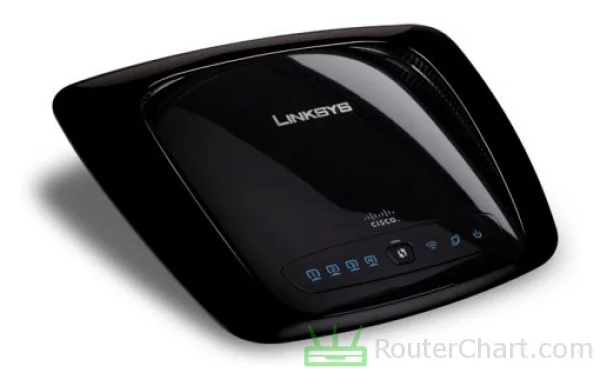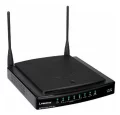Linksys WRT160N router review
Linksys introduced the WRT160N router in 2007. It is powered by Broadcom BCM4703 @ 266 MHz chipset, 32 MB of RAM, and 4 MB of flash memory.
Want to know if the Linksys made a really good router? Keep reading to know!
Table of Contents
- Linksys WRT160N specifications
- Body, dimensions, weight
- System, chipset, RAM, flash, power supply
- Network, protocols, WAN and LAN ports
- Wireless, antennas, speed, security
- Connectivity
- Administration, user interface, login information
- Links
- Verdict, Pros and Cons
- Photos
- Comparisons
Our personal experiences and opinions form the basis of this article. We aimed to share insights on a topic, and we hoped others would find it useful and inspirational. If you noticed any mistakes or missing details about the Linksys WRT160N, please let us know.

The WRT160N is an affordable and reliable router designed for basic networking needs. Linksys routers are well-liked because of their user-friendly design.
Linksys WRT160N specifications
| Brand | Linksys |
|---|---|
| Name | WRT160N |
| Type | WRT160N |
| Rating | |
| Launch | 2007 |
Body
| Dimensions | 202 x 160 x 34 mm |
|---|---|
| Weight | 290 g |
The dimensions of a router can impact its cooling capabilities. Larger routers have more room for internal cooling. If you buy a router online or have it shipped, the weight may affect the total cost.
System
| Chipset | Broadcom BCM4703 @ 266 MHz |
|---|---|
| RAM | 32 MB |
| Flash | 4 MB |
| OS | Linksys |
| Alternative OS | DD-WRT |
| Power supply | 12 V / 1 A |
The Linksys WRT160N router has a Broadcom BCM4703 @ 266 MHz processor. Some router features and software work best when they have enough RAM to help them.
Network
| Protocols | IPv4 |
|---|---|
| LAN ports | 4 x 10/100 Mbps |
| WAN ports | 1 x 10/100 Mbps |
| Mobile network | no |
| VPN support | no |
The WAN port on the WRT160N router is a Fast Ethernet port, not a Gigabit Ethernet.

Wireless
| Antennas | 2 x 1.5 dBi internal |
|---|---|
| 2.4 GHz | yes |
| 5 GHz | no |
| 60 GHz | no |
| Standards | IEEE 802.11b/g/n |
| Class | N300 |
| Speed | 300 Mbps |
| Transmit power | 17 dBm |
| Security | WEP WPA WPA2 |
| Guest network | no |
Many IoT devices, smart home devices, and older Wi-Fi devices mainly use the 2.4 GHz band. This is a Wi-Fi 4 router, with slower data transfer speeds. This can result in slower downloads, buffering, and reduced performance. The introduction of WPA2 (Wi-Fi Protected Access 2) improved upon WEP. It provides stronger security.
Connectivity
| USB ports | no |
|---|---|
| Print server | no |
| File server | no |
The WRT160N router doesn't have file-server or print-server functionality.
Administration
| Default IP | 192.168.1.1 |
|---|---|
| Default username | [blank] |
| Default password | admin |
If you can't log in to your Linksys router's setup panel, try resetting it. A reset can help you troubleshoot. It is highly recommended to change the default password of your WRT160N router. Do this after the initial setup.
Links
| Official site | https://www.linksys.com/ |
|---|
Pros and Cons
Every router, including this Linksys one, has its good sides and not-so-good sides. Let's take a closer look at both to get a full understanding of what this router can do. Just remember, this is just what I think, and you might see things differently.
Pros
- lightweight
Cons
- insufficient flash
- lack of Gigabit LAN
- Non-gigabit WAN port
- missing Wi-Fi 6 support
- lacks Wi-Fi 5 compatibility
- reduced Wi-Fi bandwidth
- incompatible with WPA3
- missing WPS support
- no USB connectivity
Linksys WRT160N photos


Linksys WRT160N comparisons
We've noticed that many of our visitors like to compare the Linksys WRT160N router with these popular models.
If there’s information about the Linksys WRT160N that you would like to see on this site, then write to us.
Updated: May 25, 2024





